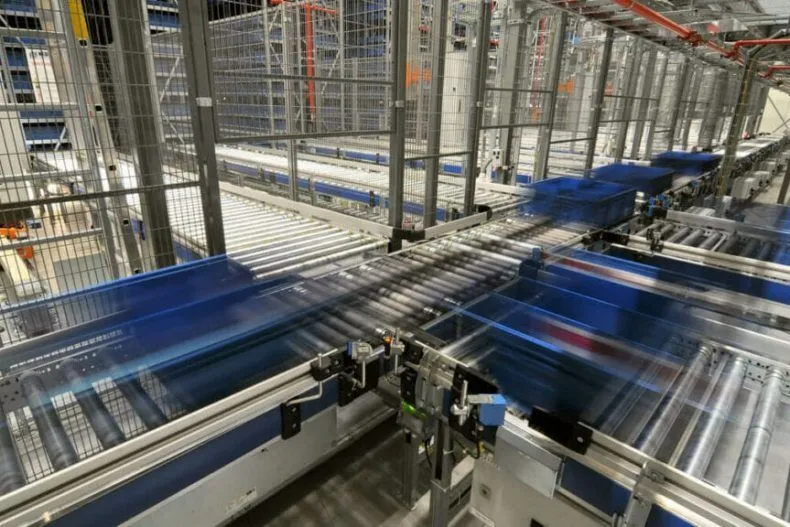 Add My Company
Add My Company
The Role Of Warehouse Automation Systems And Why They Are Crucial For Modern Food Distribution

In the rapidly evolving world of food distribution, efficiency, accuracy, and speed are paramount. Meeting the demands of consumers while ensuring food safety and quality is no small feat. This is where warehouse automation systems come into play. These innovative technologies have transformed the landscape of food distribution, revolutionising the way products move through the supply chain. In this blog post, we’ll explore the role of these automation systems and why they are vital for modern food distribution.
Understanding Warehouse Automation Systems
Warehouse automation systems encompass a range of technologies and processes designed to automate and optimise warehouse and distribution centre operations. These systems employ a combination of hardware, software, and robotics to streamline tasks such as inventory management, order picking, packing, and shipping. They are characterised by their ability to perform repetitive, labour-intensive tasks with a high degree of precision and speed.
The Importance of Warehouse Automation in Food Distribution
Enhanced Efficiency
In food distribution, time is of the essence. Warehouse automation systems significantly boost efficiency by automating routine tasks like picking and packing. This reduces the time required to process orders, ensuring products are prepared and shipped to customers promptly.
Improved Accuracy
Precision is non-negotiable in food distribution. Automated systems minimise the risk of human error, ensuring that the right products are selected, packaged, and shipped. This accuracy not only reduces costly mistakes but also enhances customer satisfaction.
Food Safety and Traceability
Food safety is paramount in the industry. Warehouse automation systems are equipped with tracking and traceability features, allowing for real-time monitoring of temperature-sensitive products and tracking the movement of goods from the supplier to the consumer. This is especially critical in preserving the quality and safety of perishable goods.
Optimised Inventory Management
Managing perishable inventory is a complex task. Automation systems provide real-time visibility into inventory levels, allowing for precise control over stock. This helps minimise food waste by ensuring that products are sold before their expiration dates.
Space Utilisation
Efficient space utilisation is crucial in food distribution, where storage space is at a premium. Automated systems maximise vertical space by utilising high-density storage solutions such as automated racking and shelving systems. This means more products can be stored in the same footprint.
Reduced Labour Costs
Labour is a significant expense in the food distribution industry. Warehouse automation systems reduce the reliance on manual labour for repetitive tasks, ultimately lowering labour costs while reallocating human resources to more strategic roles within the organisation.
Scaling Operations
As food distribution businesses grow, they must scale their operations accordingly. Warehouse automation systems are highly scalable, allowing companies to adapt to changing demand without extensive infrastructure overhauls.
Adaptation to E-commerce Trends
The rise of online grocery shopping and meal kit deliveries has created new challenges in food distribution. Automation systems enable food distributors to meet the demands of e-commerce, where orders must be rapidly processed and delivered to consumers’ doorsteps.
Some examples of the myriad of hardware components of a well-designed warehouse automation system are:
Conveyor Systems
Conveyors are the backbone of warehouse automation. They consist of belts or rollers that transport products from one location to another. Conveyor systems can be used for tasks like product sorting, merging, and diverting.
Automated Guided Vehicles (AGVs)
AGVs are mobile robots equipped with sensors and cameras that allow them to navigate and transport goods autonomously within the warehouse. They are often used for tasks like material handling, transporting items between storage areas, and loading/unloading pallets.
Automated Storage and Retrieval Systems (AS/RS)
AS/RS systems use robotic cranes, shuttles, or carousels to store and retrieve items from high-density storage racks. These systems are crucial for optimising space utilisation and reducing the need for manual labour in retrieving items from high shelves.
Robotic Arms
Robotic arms, also known as robotic pickers, are used for order picking and packing tasks. They can be equipped with various end-of-arm tools (EOATs) to handle different types of products. These robots are highly versatile and can be programmed to perform complex tasks with precision.
Sorting Systems
Sorting systems are used to segregate products based on criteria like size, weight, or destination. They often include conveyor-based mechanisms with diverters and sensors that route items to the appropriate chute or lane.
Barcode Scanners and RFID Readers
These devices are essential for tracking and identifying products in the warehouse. They scan barcodes or read RFID tags to gather information about each item’s location and status.
Sensors and Cameras
Sensors, including proximity sensors and vision systems, are used for detecting objects, measuring distances, and ensuring safe operation within the warehouse. Cameras and vision systems provide visual information for tasks like quality control and object recognition.
Palletising Robots
Palletising robots are designed to stack products on pallets efficiently. They are equipped with grippers or vacuum systems to pick up items and place them on pallets in predetermined patterns.
Shuttles
Shuttles are automated vehicles that move horizontally and vertically within storage racks to retrieve items. They are commonly used in AS/RS systems to transport products between storage locations and picking stations.
Pick-to-Light and Put-to-Light Systems
These systems use light indicators and displays to guide warehouse workers to the right items for picking and packing. They help reduce errors and increase order accuracy.
Automated Conveyor Sorters
Automated sorters are equipped with diverters and sensors to quickly and accurately sort products based on their destination. They are commonly used in distribution centres and parcel-sorting facilities.
Voice Picking Systems
Voice-picking hardware includes headsets and mobile devices that allow warehouse workers to receive picking instructions through spoken commands. This hands-free technology improves picking accuracy and productivity.
Collaborative Robots (Cobots)
Cobots work alongside human workers in a shared workspace. They are equipped with sensors and safety features to ensure safe collaboration. Cobots are often used for tasks that require human-robot cooperation, such as packing and inspection.
These hardware components work together to create a cohesive warehouse automation system that can greatly enhance efficiency, accuracy, and productivity in modern warehouses and distribution centres. The specific components chosen depend on the specific needs and objectives of the warehouse operation.
How LAC Logistics Automation Can Help
In the modern food distribution landscape, warehouse automation systems are not merely a convenience; they are essential components for success. These systems enhance efficiency, accuracy, and food safety, while also offering the flexibility to adapt to changing market dynamics and consumer preferences.
As the demand for fresh, high-quality food delivered quickly continues to grow, the role of warehouse automation systems in ensuring the seamless flow of products through the supply chain becomes increasingly crucial. This is why LAC’s team is on hand every step of the way to provide expert design installation and execution of warehouse automation systems for Food distribution businesses that embrace these technologies.
Allowing them to be better positioned to thrive in the ever-evolving and competitive food industry, meeting the expectations of both consumers and regulators while ensuring the availability of safe and nutritious food products. Get in touch with us today!
For more information on The Role Of Warehouse Automation Systems And Why They Are Crucial For Modern Food Distribution talk to L-A-C Logistics Automation

